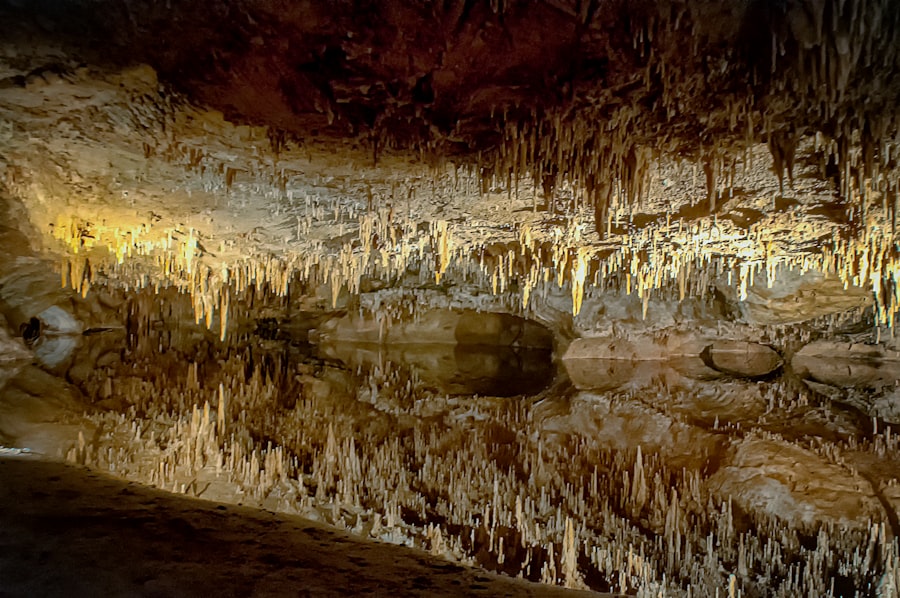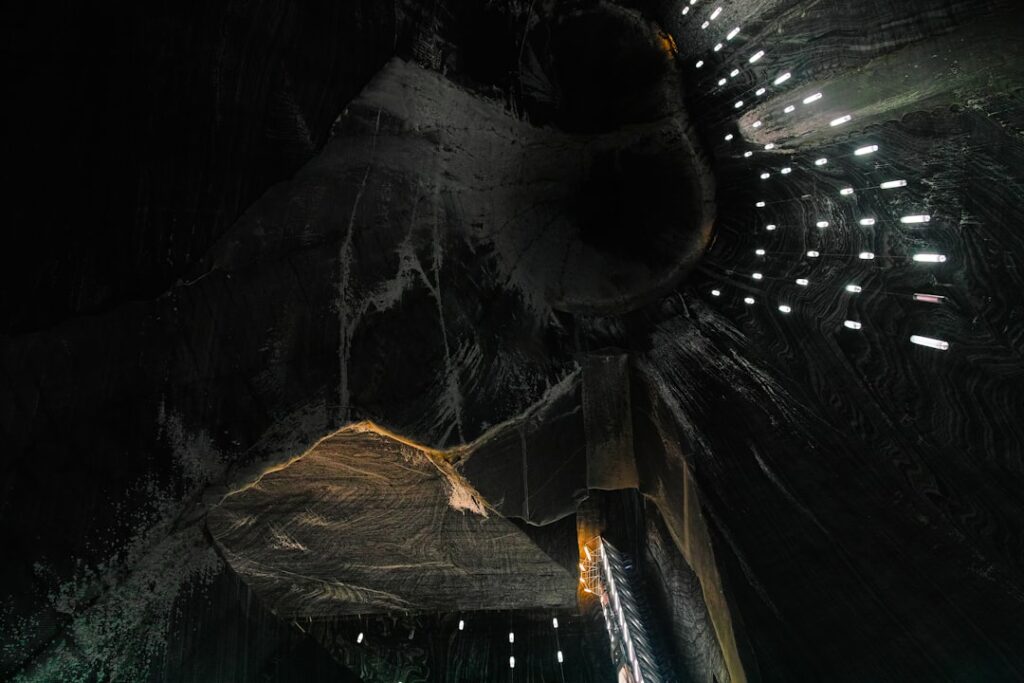Scotland, a land steeped in history and natural beauty, is home to an extensive and fascinating cave system that beckons adventurers and nature enthusiasts alike. These subterranean wonders, carved by the relentless forces of nature over millennia, offer a glimpse into the geological past while also serving as a canvas for the rich tapestry of Scottish folklore. As you delve into the depths of these caves, you will discover not only their stunning formations but also the stories that have been woven around them through the ages.
The allure of Scotland’s caves lies not just in their physical beauty but also in the sense of mystery they evoke. From the rugged cliffs of the Highlands to the serene shores of the Hebrides, these natural formations are scattered across the landscape, each with its own unique character and charm. Whether you are an avid spelunker or simply a curious traveller, exploring these caves can be an exhilarating experience that connects you to the very heart of Scotland’s natural heritage.
Summary
- Scotland’s cave system is a fascinating and diverse network of underground passages and chambers, offering a unique adventure for explorers and nature enthusiasts.
- Scottish caves are steeped in history and legends, with stories of ancient rituals, hidden treasures, and mythical creatures adding to their allure.
- The geography and geology of Scotland’s caves are shaped by the country’s rugged landscapes, with limestone, sandstone, and volcanic formations creating a variety of cave types.
- Scottish caves are home to a rich array of wildlife and flora, including bats, cave spiders, and unique plant species adapted to the dark and damp conditions.
- Exploring Scotland’s caves offers both adventure and challenges, with opportunities for caving, rock climbing, and underground photography, but also requiring careful preparation and safety measures.
The History and Legends of Scottish Caves
The history of Scotland’s caves is as rich and varied as the landscape itself. Many of these caves have served as shelters for ancient peoples, providing refuge from the harsh elements and a place to gather. Archaeological evidence suggests that some caves were inhabited as far back as the Mesolithic period, with remnants of tools and pottery discovered within their depths.
As you wander through these ancient spaces, you can almost feel the presence of those who came before, their lives intertwined with the very rock that surrounds you.
Legends and folklore abound in Scottish cave lore, adding an enchanting layer to your exploration. Tales of mythical creatures, such as selkies and fairies, often find their origins in these dark recesses.
The famous Fingal’s Cave on the uninhabited island of Staffa is steeped in legend, said to be the home of the giant Fingal himself. As you stand at the entrance, listening to the waves crashing against the basalt columns, you might find yourself captivated by the stories that have been passed down through generations. These narratives not only enrich your understanding of the caves but also connect you to Scotland’s cultural heritage.
The Geography and Geology of Scotland’s Caves

Scotland’s caves are a testament to the country’s diverse geography and complex geological history. The landscape is characterised by a variety of rock types, including limestone, sandstone, and granite, each contributing to the formation of unique cave systems. The limestone regions, particularly in areas like the Southern Uplands and the Highlands, are renowned for their extensive karst landscapes, where erosion has created intricate networks of caves and underground rivers.
As you explore these geological marvels, you will encounter stunning formations such as stalactites and stalagmites, which have formed over thousands of years through the slow drip of mineral-rich water. The interplay between water and rock has sculpted these caves into breathtaking chambers that can leave you in awe. Understanding the geological processes at work can deepen your appreciation for these natural wonders, revealing how time and nature have collaborated to create such extraordinary spaces.
Wildlife and Flora in Scottish Caves
While caves may seem barren at first glance, they are often teeming with life. The unique microclimates within these subterranean environments provide habitats for a variety of species adapted to darkness and humidity. As you venture into Scotland’s caves, keep an eye out for bats, which are among the most common inhabitants.
These fascinating creatures play a crucial role in maintaining the ecosystem by controlling insect populations and pollinating plants. In addition to bats, you may encounter various species of cave-dwelling insects and even rare fungi that thrive in the damp conditions. The flora found in cave entrances often includes mosses and ferns that flourish in the shaded environment.
This delicate balance of life highlights the importance of preserving these ecosystems, as they are not only home to unique species but also serve as indicators of environmental health. By observing and respecting this biodiversity during your explorations, you contribute to the ongoing conservation efforts aimed at protecting these fragile habitats.
Exploring Scotland’s Caves: Adventure and Challenges
Embarking on an adventure through Scotland’s caves can be both exhilarating and challenging. The thrill of navigating through narrow passages and vast chambers is matched only by the sense of discovery that comes with each new turn. However, it is essential to approach cave exploration with caution and respect for the environment.
Many caves can be treacherous, with slippery surfaces and sudden drops that require careful navigation.
Before setting out on your cave adventure, it is wise to equip yourself with proper gear, including sturdy footwear, helmets with headlamps, and appropriate clothing for varying temperatures.
Joining guided tours can enhance your experience by providing valuable insights into the geology and history of the caves while ensuring your safety.
As you traverse these underground realms, take a moment to appreciate not only the beauty around you but also the challenges that come with exploring such wild places.
Conservation Efforts for Scottish Caves

Protecting Fragile Ecosystems
These initiatives often focus on habitat restoration, monitoring wildlife populations, and educating visitors about the importance of protecting fragile ecosystems.
Playing Your Part in Conservation
You can play a role in these conservation efforts by adhering to guidelines set forth by local authorities and conservation groups. Simple actions such as staying on designated paths, avoiding littering, and respecting wildlife can make a significant difference in preserving these delicate environments.
Safeguarding Scotland’s Caves
By being a responsible explorer, you contribute to safeguarding Scotland’s caves for years to come, ensuring that future generations can experience their beauty and wonder.
Famous Scottish Caves to Visit
Scotland boasts a plethora of remarkable caves that are well worth a visit. One such gem is the famous Fingal’s Cave on Staffa Island, known for its stunning basalt columns and dramatic sea views. This natural wonder has inspired artists and musicians alike, including Felix Mendelssohn, who composed an overture inspired by its beauty.
As you stand within its echoing chambers, you will understand why it has captured the imagination of so many. Another must-visit location is the Oban Cave System on the west coast, which offers a unique opportunity to explore both land and sea caves. Here, you can witness fascinating geological formations while also enjoying breathtaking coastal scenery.
For those seeking a more adventurous experience, the Marble Caves in Argyll provide an exhilarating opportunity for kayaking through stunning blue waters surrounded by striking rock formations. Each cave offers its own unique experience, inviting you to immerse yourself in Scotland’s natural beauty.
Tips for Exploring Scottish Caves Safely
When venturing into Scotland’s caves, safety should always be your top priority. Before embarking on your journey, ensure that you are well-prepared by researching your chosen cave system thoroughly. Familiarise yourself with its layout, potential hazards, and any specific regulations or guidelines that may be in place.
It is advisable to explore caves in groups rather than alone; this not only enhances safety but also enriches your experience through shared discovery. Always carry essential equipment such as headlamps or torches with extra batteries, first aid kits, and sufficient water supplies. Additionally, inform someone about your plans before heading out; this simple precaution can be invaluable in case of emergencies.
As you navigate through these enchanting spaces, remember to tread lightly and respect both the natural environment and its inhabitants. By following these safety tips and embracing responsible exploration practices, you can enjoy all that Scotland’s caves have to offer while ensuring their preservation for generations to come.
For those interested in the rich tapestry of Scottish culture and traditions, exploring the mystical allure of Scottish caves can be a profound experience. These natural wonders are not only breathtakingly beautiful but are steeped in history and folklore. If you’re captivated by the unique Scottish traditions and considering incorporating them into your special day, you might find the article on unforgettable hand-fasting traditions at Scottish humanist weddings particularly enlightening. This piece delves into the ancient customs that are still celebrated in Scotland today, offering a deeper understanding of the cultural heritage that could also be reflected in the mystical settings of Scottish caves.
FAQs
What are Scottish caves?
Scottish caves are natural underground formations found throughout Scotland. They can vary in size and shape and are often formed by the erosion of rock by water.
How many caves are there in Scotland?
There are over 2,000 known caves in Scotland, with new ones still being discovered.
What are some famous Scottish caves?
Some famous Scottish caves include Smoo Cave in Durness, Fingal’s Cave on the Isle of Staffa, and Bone Caves in Inchnadamph.
What can be found in Scottish caves?
Scottish caves can contain a variety of geological formations, including stalactites, stalagmites, and underground rivers. They can also be home to various species of bats and other wildlife.
Are Scottish caves open to the public?
Many Scottish caves are open to the public for exploration, but some may require permission or a guide to visit due to conservation efforts and safety concerns.
What should I consider before visiting a Scottish cave?
Before visiting a Scottish cave, it’s important to consider safety precautions, such as informing someone of your plans, bringing appropriate gear and clothing, and being aware of the potential for uneven terrain and low visibility.

